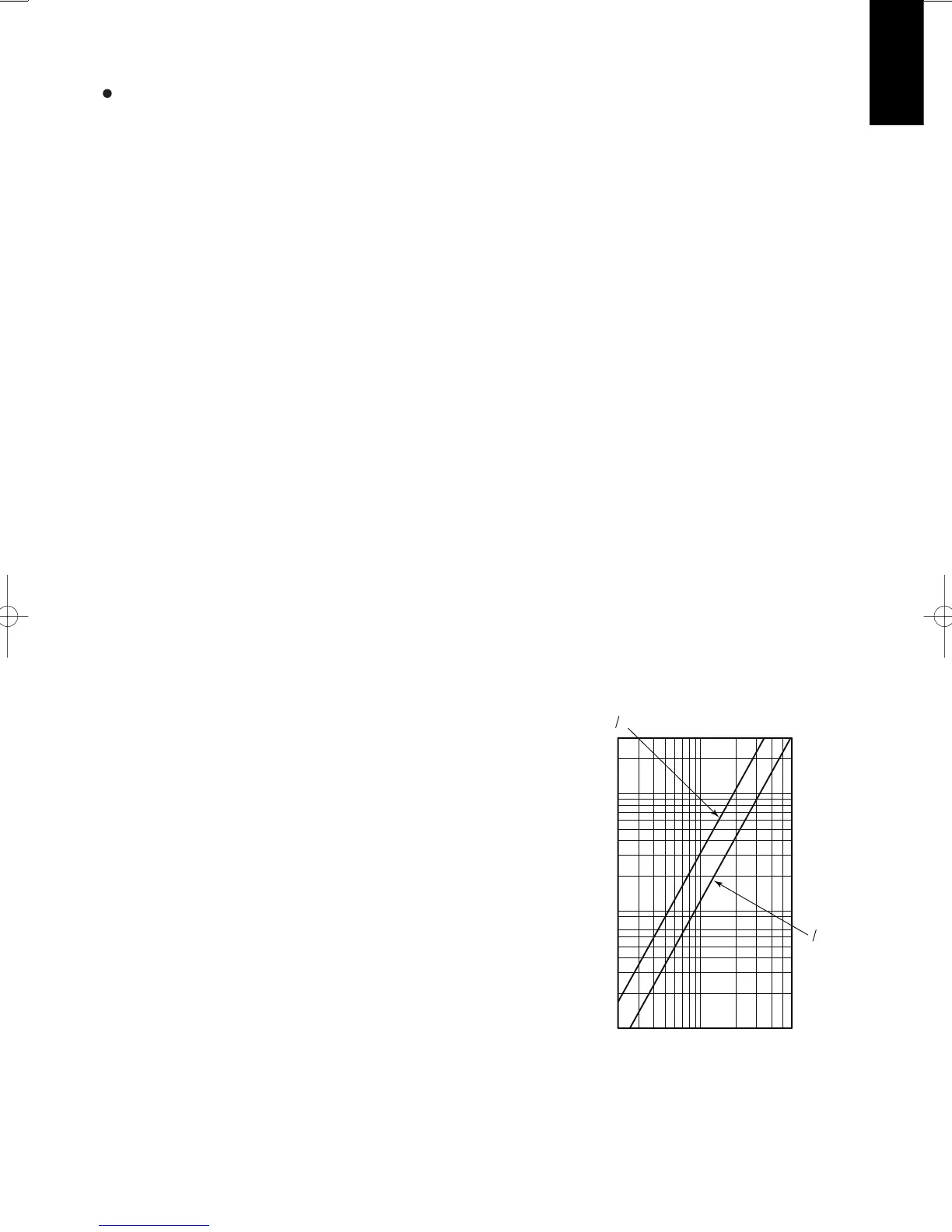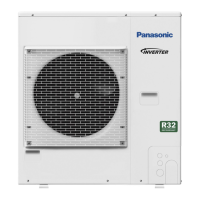1
1-293
1-9. Intaking Fresh Air of 4-Way cassette Type
Precautions Regarding External Air Intake
(1) Ventilation Load
Ensure that the design of the air-conditioner takes air-conditioning loads into consideration when external air
intake is involved.
(2) Restrictions on External Air Intake
Ensure that the design conforms to the restrictions on air intake volume stipulated in accordance with the model
of the indoor unit and the intake method. Consideration must also be taken to mixed air content listed in (3)
below without fail.
* If the air intake volume does not satisfy the required ventilation volume, air must be fed into the room
separately with the use of a total heat exchanger or a fresh air processing air-conditioner, etc.
(3) Mixed Air
The amount of external air intake must be set within the scope of the unit’s usage conditions when external air and
internal air is mixed together. This is especially important in the following cases, in which it is necessary to either
feed external air into the room after it has been processed or reduce the amount of external air that is fed in.
1
When the external dew-point temperature is greater than the dry-bulb temperature of the air sucked into the
unit.
Ensure that processing is performed so that the external dew-point temperature is lower than the temperature
of the air sucked into the unit to prevent the risk of condensation building up.
2
In the case of low external temperatures.
There are cases in which the temperature of mixed air is lower than the operating range of the unit if
excessive amounts of external air intake are used when the external temperature is low. This problem is to
be solved by either feeding external air into the room after it has been processed or reducing the amount of
external air that is fed in.
3
When used in combination with humidifiers
External air must always be processed when the external air temperature reaches freezing point to prevent
the risk of the humidifier freezing.
(4) Arranging Ducts and Filters in the Field
External air intake ducting must be arranged in the field. External
air filters must also be installed without fail in order to prevent the
intake of dust and grit.
(5) Thermal Insulation for Ducts
Ensure that all external air intake ducting is heat-insulated
without fail. Failure to observe this may result in the build-up of
condensation.
(6) External Air Intake Coupling
Ensure that the design for external air intake is coupled with the
fan blower operations of the indoor unit. There are cases in which
the dust that accumulates in the filter is blown into the room if the
external air is fed from the filter. There are also cases in which the
noise of external air being fed into the room can be heard from
the indoor unit if external air is forcibly fed when the booster fan or
other components on the indoor unit are not operating.
(7) Booster Fan Selection
Select the booster fan in accordance with the resistance of
the external air intake duct (diagram on the pressure loss
characteristics of the air flow volume for flexible cylindrical ducts)
and the resistance prevalent inside the unit (volume of external air
fed and the resistance within the unit).
(8) Attaching the External Air Intake Flange
o100
o125
30
0.1
0.2
0.4
0.6
0.8
10
20
30
1
2
4
6
50
100 200
300 500400
Flexible Cylindrical Duct
Pressure Loss (Pa)/Meter
Airfl ow (m
3
/h)
Air Flow Volume for Flexible Cylindrical
Duct-Pressure Loss
SM830211-07PAC-i.indb293SM830211-07PAC-i.indb293 2013/09/1722:47:582013/09/1722:47:58

